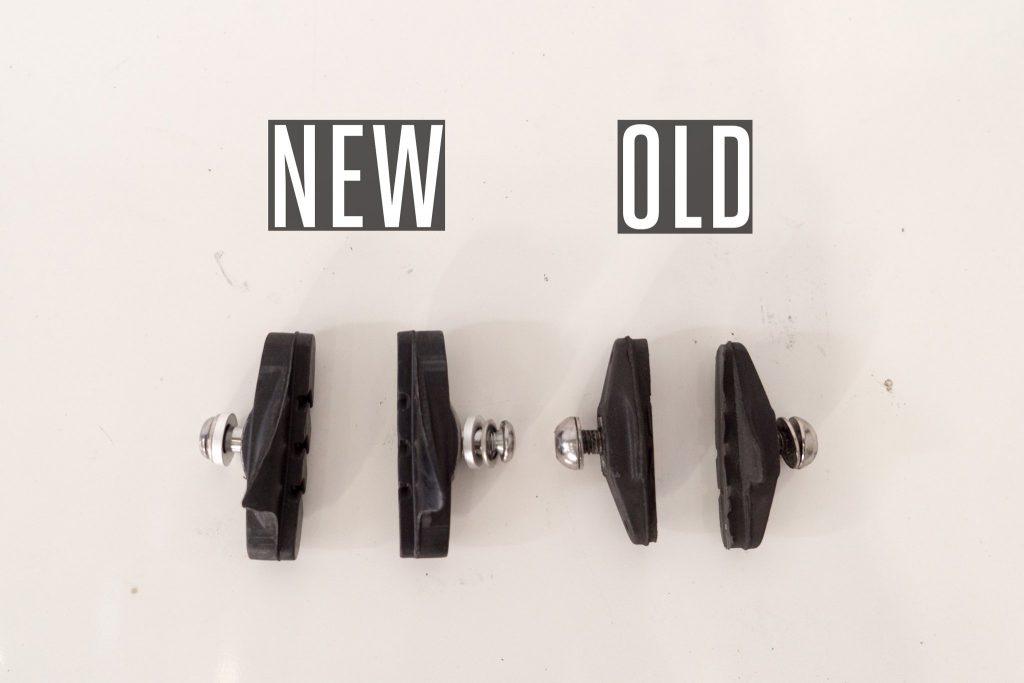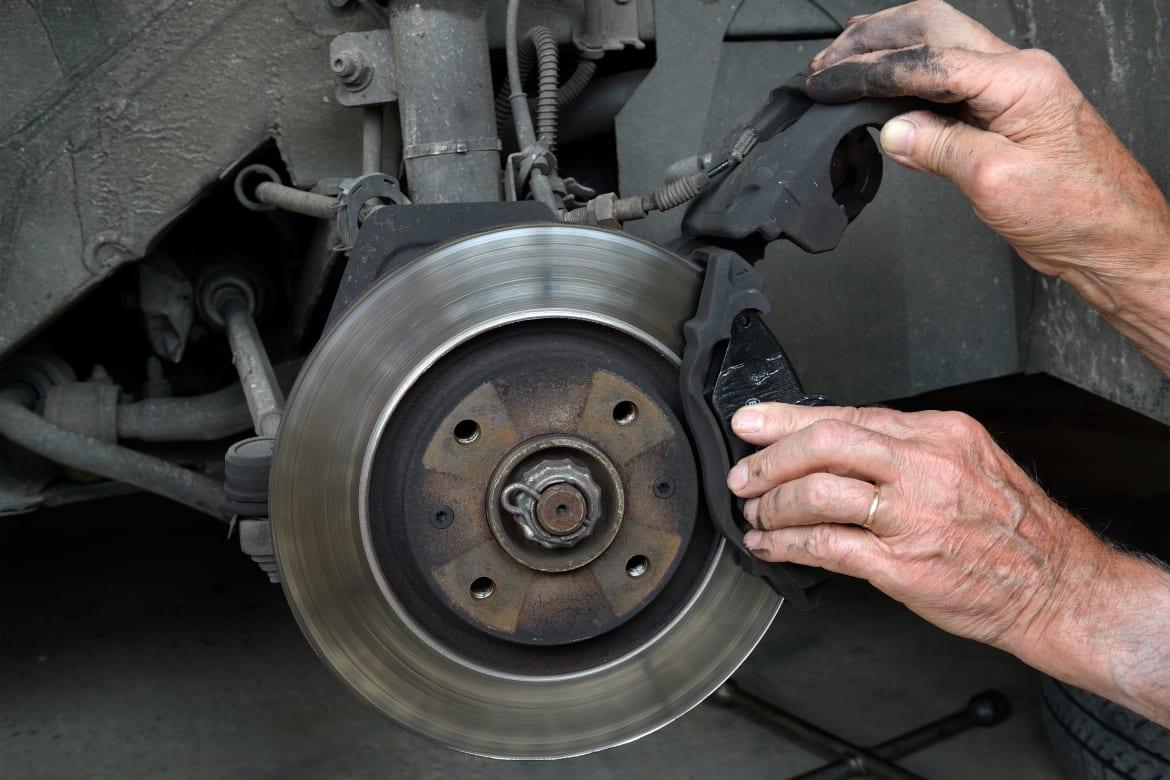The correct brake pad thickness is vital for not only the engine’s proper operation but also road safety. Replacing the pads at the right time will save plenty of money down the road. But, at what thickness should brake pads be replaced? How to correctly do the brake pad measurements and take the necessary action? Let’s get to the bottom of it.
Contents
What Are Brake Pads?
Brake pads, which sit between the brake shoe and brake drum, are crucial to the brake system of a vehicle. If these are damaged or don’t have the required thickness, other components of the brake system – rotors, calipers, and discs – will be worn out. It’s important to figure out the right time to replace the pads to avoid unsafe driving conditions.

Read more:
Brake Pad Thickness: The Minimum And Recommended Limits
Brake pads are made of steel plates, shims, and friction materials. There are two layers of rubberized coating and thermal insulation coating on the outside. Like all other things, these materials wear out over time. Also, rough driving and poor road conditions play a part in hastening the deterioration. The slits on the brake pads have the effect of releasing heat during operation. When applying the brake, the driver hears a squealing sound, which is a sign that the brake pads are worn and need to be replaced.
The normal lifespan of brake pads is anywhere between 30,000 – 35,000 miles. However, it can be even more or less depending on the car’s make and model, driving habits, and road conditions.
New brake pad thickness
So, how thick are brake pads when they are purchased new? Well, the new brake pad depth is approximately 12 mm. This is the standard thickness and it will last more or less 35,000 miles.
However, the thickness of new brake pads can vary depending on the make and model of the vehicle, as well as the specific type of brake pads being used. In general, most new brake pads have a thickness of around 10-12 millimeters (mm) for the front pads and 8-10 mm for the rear pads. However, it’s important to note that the thickness of the brake pads will gradually decrease as they wear over time, and it’s recommended to replace them before they become too thin. Most manufacturers recommend replacing brake pads when they reach a thickness of around 3-4 mm.
If you are an aggressive driver who uses the brake often, they will not last long. Also, they have a shorter lifespan than usual when you have to engage the brake frequently due to heavy commuter traffic.
Minimum brake pad thickness
Mechanics suggest replacing brake pads because continuous engagements make their friction material become thin. When the material rubs away completely, the next stage is the failure of the brake.
The brake pad thickness has to be at least 6.4 mm or more for its proper functioning. You can get away with thinner pads sometimes. However, quick replacement when the thickness is between 6.4 to 3.2 mm will save the brake system from severe damage.
How To Check Brake Pad Thickness?
Here are the steps to check brake pad thickness:
- Park the vehicle on a level surface and engage the parking brake.
- Locate the brake caliper behind the wheel. The caliper is the part that holds the brake pads and squeezes them against the rotor to slow the vehicle down.
- Look for the brake pad wear indicator. This is a small metal tab that protrudes from the brake pad and is designed to make contact with the rotor when the pad wears down to a certain level, creating a squeaking noise to alert the driver that the pads need to be replaced.
- Brake pad measurement with a caliper. Place the caliper jaws around the brake pad, making sure to measure the thinnest part of the pad. Take note of the measurement.
- Compare the measurement to the manufacturer’s specifications or the brake pad thickness chart. Look up the recommended minimum thickness for the brake pads in your vehicle’s owner’s manual or consult a repair manual. If the pads are below the minimum thickness, they need to be replaced.
- Repeat the process for the other brake pads on the vehicle.
- Inspect the brake rotors for any signs of damage or wear. If the rotors are damaged or worn, they may need to be resurfaced or replaced along with the brake pads.
It’s important to check your brake pads regularly to ensure they are in good condition and replace them when necessary to maintain safe braking performance.
Watch more:
The Symptoms Of Thin Brake Pads
A physical inspection is enough to check whether the pads are within the recommended thickness. You will need just a flashlight, inspection mirror, and measuring gauge to do it. If the brake pads are too thin causing friction to decrease, the braking ability is less effective. This is very dangerous while driving.

Some warning signs not to ignore are:
- Metallic grinding or growling sound, which comes when brake discs and calipers rub against each other. It means that the pads are completely worn out.
- Screeching, squealing, or whining noises when you engage the brakes. If the sound does not go away after a couple of times, you have to check the brake pads.
- Some cars have an indicator light on the dash to give a thin-pad warning.




Brake pad is an important component of the brake which is situated between the brake shoe and the brake drum. When these pads become damaged or don’t have the required thickness then other components of the brake system such as calipers, rotors and disc will wear out. To avoid unsafe driving conditions, we should find out the right time to replace the brake pads. Replacement of the brake pads should be done when it’s thickness is between 6.4 mm-3.2mm to avoid severe damage to the brake system.
Had my 2007 Chevy Malibu inspected and passed for all brakes, then made notes of: F 6B and R 7B which I believe is the thickness of the brake pads, I thought they measure by MM in Pennsylvania. 3rd note was T-5 was is that?
How soon should I replace my brake pads?
I didn’t realize that brake pads were only 12mm to begin with, that’s much smaller than I imagined. Who knew that such a thin material would be able to work for up to 35,000 miles? I’m helping my father check his car to see if there are any parts of his that may need replacing and noticed that his brake pads were already worn out and thin. I’ll be sure to measure it and if it’s close to your minimum of 6.4mm I’ll have him get car brake pad replacements. It’s better to be safe than sorry, especially when it comes to machinery such as vehicles. So I want to make sure his brake system is in good condition.